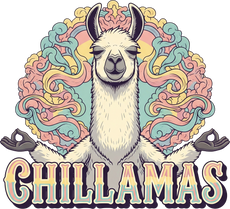Navigating the world of natural wellness products can sometimes feel like learning a new language. At Chillamas, we believe in transparency and clarity, empowering you to make informed choices for your well-being. Understanding what's on a product label is key to ensuring you're getting the pure, premium quality you deserve to Spit Out the Stress and Find Your Calm.
Here's what to look for when choosing your natural wellness products:
1. Clear Cannabinoid Content
The first thing to check is the precise amount of the cannabinoids present, typically in milligrams (mg). For example, a label might state "500mg CBD" or "250mg CBD + 250mg CBG." This tells you the potency and helps you understand the suggested serving size for your desired experience.
2. Full Spectrum, Broad Spectrum, or Isolate?
These terms describe the range of plant compounds included in the product:
- Full Spectrum: Contains all the naturally occurring compounds from the hemp plant, including various cannabinoids (like CBD, CBG, trace amounts of THC below the legal limit), terpenes, and flavonoids. Many believe these compounds work together synergistically (the "entourage effect").
- Broad Spectrum: Similar to full spectrum but with detectable THC removed. It still offers a wide range of other cannabinoids and terpenes.
- Isolate: Contains only one specific cannabinoid, typically CBD, in its purest form.
Your preference might vary, but knowing what these terms mean helps you choose products that align with your wellness goals.
3. Third-Party Lab Testing (Crucial for Trust)
This is perhaps the most important indicator of quality and safety. Reputable brands will always provide Certificate of Analysis (COA) from an independent, third-party lab. A COA confirms:
- Cannabinoid Potency: Verifies the amounts of CBD, CBG, and other cannabinoids listed on the label.
- Purity: Tests for harmful contaminants like pesticides, heavy metals, mold, and residual solvents.
Look for a QR code on the label or a clear link on the product page to access these reports. If a brand doesn't provide third-party testing, it's a red flag.
4. Ingredients List
Always check the full list of ingredients. Look for natural, high-quality components. For oils, this might include carrier oils like MCT or hemp seed oil. For edibles, consider the type of sweeteners and other additives. Fewer, recognizable ingredients are often better.
5. Sourcing Practices (Where the Hemp Comes From)
While not always explicitly on the label, a transparent brand will share information about where their hemp is grown and how it's harvested. Look for hemp grown in clean, regulated environments, as hemp is a bio-accumulator, meaning it absorbs elements from the soil.


